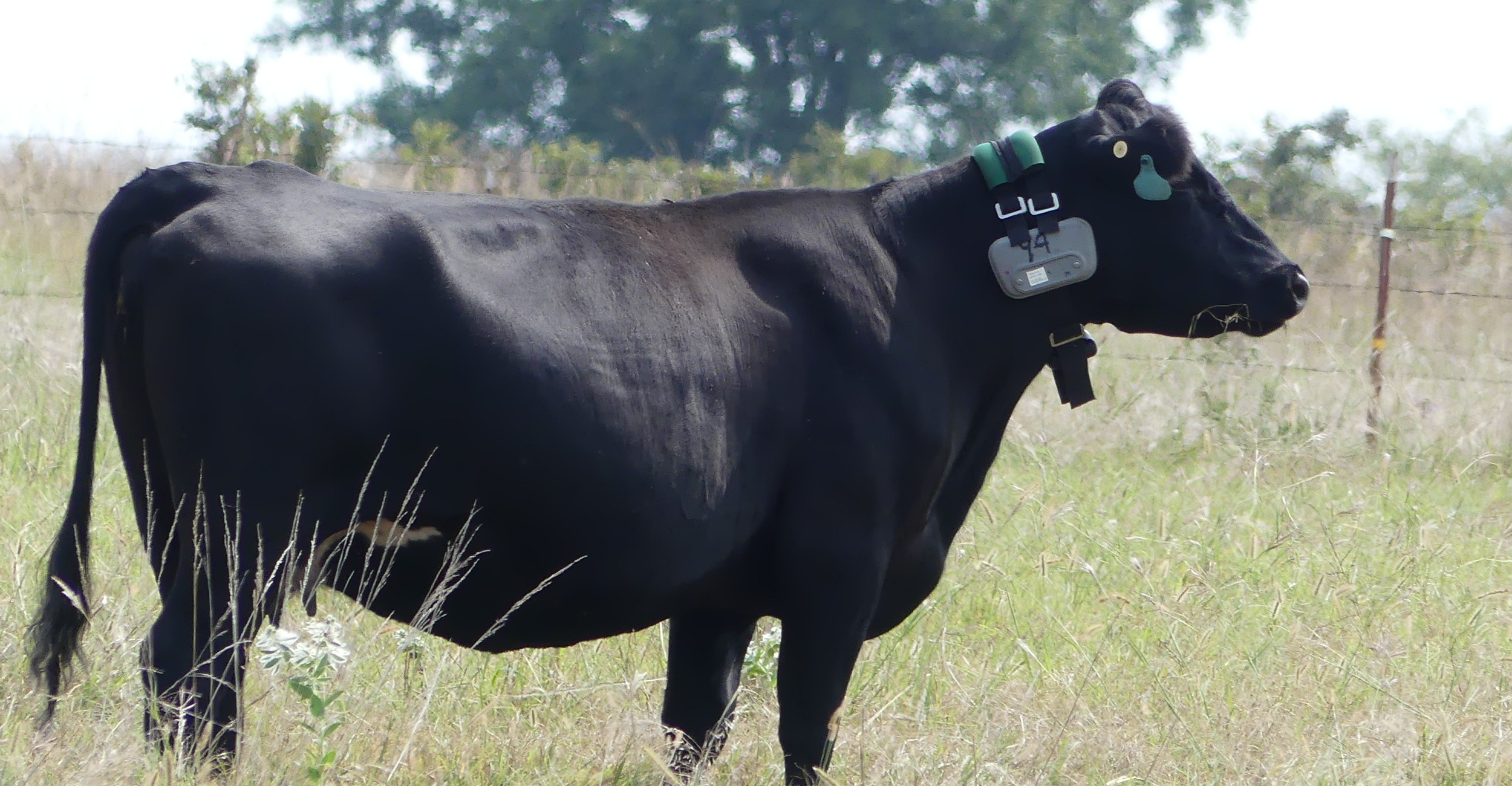
Researchers deploy virtual fencing technology to improve grazing and water quality
Thursday, June 24, 2021
Media Contact: Gail Ellis | Communications Specialist, Copywriter | 620-515-2498 | gail.ellis@okstate.edu
Oklahoma State University researchers have received funding from the Environmental Protection Agency to examine how virtual fencing technology could improve the water quality and ecosystems of cattle grazing lands.
The new EPA grant totaling more than $800,000 supports research on how GPS-enabled collars worn by cattle can help producers not only better manage grazing, but also improve water quality and other natural resources, such as wildlife habitat and soil health.
“It’s the same concept as collars for your pets but tracked on a web portal where you can pull up a map of your ranch and designate the areas where you do and don’t want cattle to graze,” said Kevin Wagner, the project’s principal investigator and director of the Oklahoma Water Resources Center.
Compared with traditional or electric fencing, virtual fencing requires less labor, time and maintenance while increasing flexibility. The web-based, mobile fencing system can be added, moved or removed in a matter of hours.
Wagner and other faculty from OSU Ag Research including Laura Goodman, range Extension specialist; Ali Mirchi, assistant professor of water resources engineering; Bryan Murray, assistant professor of forest ecology and geospatial technology; and Ryan Reuter, associate professor of range beef cattle nutrition have spent the past year gathering preliminary data in collaboration with Vence. The company is a startup based in San Diego, California, and one of only three companies in the world developing the emerging technology.
“The latest Water Quality report from the Oklahoma Department of Environmental Quality (2018) shows poor grazing practices are impacting thousands of acres of lakes and miles of rivers and streams in Oklahoma,” Wagner said. “Our objective is to provide cattle producers with new tools that they can use to improve the management of grazing on their ranches. This will not only improve the quality of their grazing lands and cattle production but also water quality as ground cover improves and the amount of time that cattle spend in critical areas is reduced.”
Initial research involved deploying GPS collars on a group of about 25 cattle at the OSU Bluestem Research Range in Stillwater. Movement and frequent grazing patterns were tracked for two weeks as the cattle roamed freely throughout the 100-acre pasture. The Vence product — short for virtual fence — was created so that when cattle reach an off-limits zone, an auditory cue will sound. If the cattle continue to approach, an electric stimulus is enacted, teaching the animals to avoid that area of the pasture when they hear the auditory cue.
Several short-term trials with different virtual boundaries in various areas of the pasture were conducted in 2020. Maps that visually indicated where the cattle grazed revealed positive results in each case. In one instance, the GPS collars suggested a 64% reduction in the amount of time cattle spent in a zoned off portion of the pasture and a 99% reduction in an area where cattle had trafficked heavily prior to the Vence boundary.
The new EPA grant will support additional research on the effectiveness of longer-term studies to improve watershed quality. Other planned research will examine how the GPS collars impact cattle stress compared to traditional fencing and more conventional electric fences. The OSU team plans to test blood cortisol levels and monitor other aspects of animal physiology to ensure cattle health and safety.
“We want to determine if this is a tool that could replace the expensive and inflexible physical infrastructure traditionally used in ranching,” Reuter said. “We’re looking at how virtual fencing and other precision technology can improve production and the environment and save on labor and equipment costs to make ranching life easier, less stressful.”
GPS collars may not be the most practical or cost-effective strategy for all cattle producers, but Vence is working closely with several ranching operations and academic teams across the country to determine the ideal scenario for this kind of emerging virtual technology. When Vence collars join the commercial market later in 2021, the product will be offered as an annual subscription service per animal with additional startup fees.
“Progressive ranchers are our customer base for purchasing this virtual capability. The technology changes quickly, and when we can earn third-party validation from the perspective of ag research, it’s the best way to drive commercial adoption,” said Todd Parker, Vence director of product development.
Future research will not only help Vence identify its niche in a new market but also protect sensitive areas utilizing rotational grazing systems implemented with the technology. Wagner and his colleagues will monitor stream and creek water quality, observe fish habitats and study stream bank stability to determine the effects of improved grazing management on vegetation and erosion in target areas where cattle are virtually fenced. Other potential environmental benefits of virtual fencing could include preserving the habitats of pollinators such as bees or monarchs during the flowering phase of milkweed.
“The vast majority of producers I’ve talked to have been interested,” Wagner said. “If you’ve got a small place, this may not be the technology for you, but if you’ve got several thousand acres and a lot of cattle that you’re running along streams and rivers, it may be viable technology you can use.”
